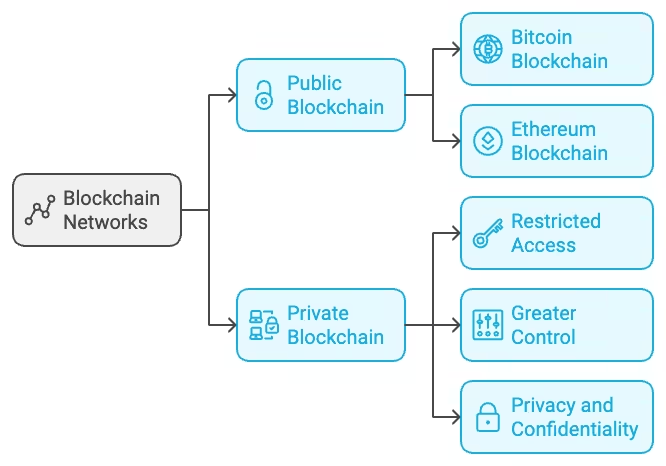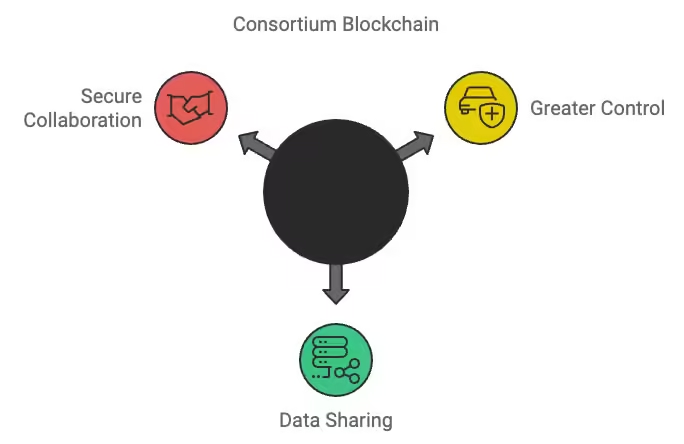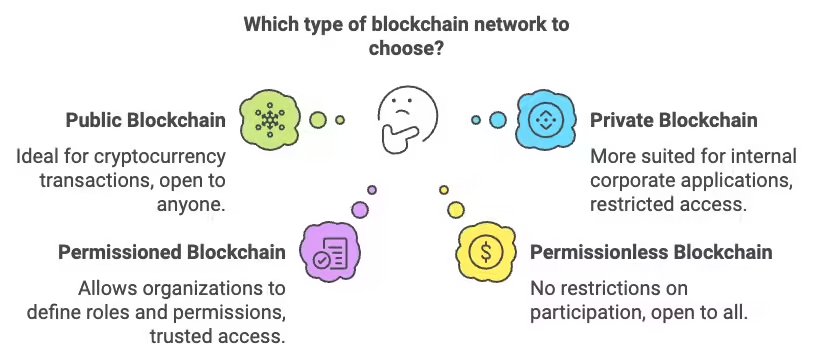What Is Blockchain Technology? Definition, Uses, and How It Works
Blockchain technology has emerged as a revolutionary force in various sectors, promising to enhance security, transparency, and efficiency through the use of distributed ledger technologies. Defined as a decentralized, distributed ledger, it allows for the secure storage and transfer of data across a network of computers, exemplifying how blockchain can be used in data management. This article delves into the intricate workings of blockchain technology, its various uses, and the underlying principles that make it a powerful tool for innovation.
How Does Blockchain Work and What Are Its Features?
Understanding the Blockchain Protocol
The blockchain protocol is the set of rules that govern how data is added, validated, and stored on the blockchain network. At its core, blockchain is a decentralized system that operates without a central authority, relying instead on a consensus mechanism to validate transactions. Each transaction is grouped into a block, which is then linked to the previous block, forming a chain. This structure not only ensures the integrity of the data but also makes it nearly impossible to alter past records without the consensus of the network. The protocol also defines how nodes—participants in the network—communicate and share information. This aspect of blockchain allows for real-time updates to the blockchain ledger, ensuring that all participants have access to the most current information.
Key Features of Blockchain Technology
Blockchain technology encompasses several key features that enhance its utility and appeal. One of the primary characteristics is its decentralized nature, which mitigates the risk of single points of failure. In a public blockchain, every participant has a copy of the entire blockchain database, ensuring transparency and accountability. Moreover, blockchain is immutable; once data is stored on the blockchain, it cannot be altered retroactively without altering all subsequent blocks, which requires the consensus of the network. Additional features include the provision of security through cryptographic techniques, enabling participants to engage in secure transactions without the need for intermediaries. These features collectively contribute to the trustworthiness of blockchain applications, making them ideal for various industries, including finance, healthcare, and supply chain management, where the use of blockchain can provide significant advantages.

How Transactions Are Stored on the Blockchain
Transactions on the blockchain are stored in a manner that ensures both security and accessibility, a key aspect of the use of blockchain in various applications. When a transaction is initiated, it is broadcasted to the network where it is verified by nodes using the blockchain protocol. Once validated, the transaction is bundled with others into a block, which is then added to the copy of the blockchain. This block is then added to the existing blockchain in a linear, chronological order, creating a record that is visible to all participants in the network. Each block contains a cryptographic hash of the previous block, which links them together. This method of storing transactions not only enhances security but also allows for an auditable trail of all transactions that have ever occurred on the blockchain, thus supporting the principles of transparency and trust in blockchain solutions.

What Are the Different Types of Blockchain Networks?
Public Blockchain vs. Private Blockchain
Blockchain networks can be categorized into various types, with public and private blockchains being the most prominent. A public blockchain, such as the Bitcoin blockchain or Ethereum blockchain, is open for anyone to join and participate in the network. It is characterized by its decentralized nature and is secured by a consensus mechanism that often involves mining. In contrast, a private blockchain is restricted to a specific group of users, often within an organization or consortium. This permissioned blockchain allows for greater control over who can participate and what transactions can be made, catering to businesses that require privacy and confidentiality in their operations. Understanding the differences between these types of blockchain is crucial for organizations looking to leverage blockchain technology for their specific needs.

Understanding Consortium Blockchains
Consortium blockchains represent a hybrid model that combines elements of both public and private blockchains. In a consortium blockchain, a group of organizations collaboratively manages the blockchain network, with access restricted to authorized participants. This structure allows for greater control than public blockchains while still promoting some level of decentralization. Consortium blockchains are particularly beneficial for industries such as banking and supply chain, where multiple stakeholders need to share data securely while maintaining privacy. By using a consortium blockchain, organizations can streamline operations and foster collaboration without sacrificing security or transparency.

Types of Blockchain Networks Explained
Beyond public and private blockchains, there are other types of blockchain networks worth noting. For instance, permissioned blockchains allow organizations to define roles and permissions for participants, ensuring that only trusted entities can access certain functionalities. On the other hand, permissionless blockchains do not impose such restrictions, allowing anyone to join and participate freely. Each type has its own use cases and advantages, depending on the specific requirements of businesses and the level of control they wish to maintain. For example, while a public blockchain is ideal for cryptocurrency transactions, a private blockchain may be more suited for internal corporate applications.

What Are the Benefits and Advantages of Using Blockchain?
Security Benefits of Blockchain Technology
One of the most significant benefits of blockchain technology is its enhanced security features. The decentralized nature of a blockchain means that data is not stored in a single location, making it less vulnerable to hacking attempts. Additionally, blockchain employs advanced cryptographic techniques to secure transactions, ensuring that data is encrypted and tamper-proof. This robust security framework is particularly valuable in industries such as finance, where the integrity of data is paramount. With blockchain solutions, organizations can reduce the risk of fraud and data breaches, thereby fostering trust among users and stakeholders.

Efficiency and Transparency in Blockchain Applications
Blockchain technology promotes efficiency through its ability to streamline processes and eliminate intermediaries. By using blockchain, organizations can automate transactions via smart contracts, which are self-executing contracts with the terms directly written into code. This automation reduces the need for manual intervention, speeding up transaction times and lowering costs. Furthermore, the transparency offered by blockchain applications allows all participants to view and verify transactions in real time. This level of visibility fosters accountability and enhances trust among parties involved, making blockchain an attractive option for businesses seeking to improve their operational efficiency.
How Blockchain Solutions Improve Supply Chain Management
In the realm of supply chain management, blockchain solutions are revolutionizing the way goods are tracked and verified. The ability to create a transparent and immutable record of transactions allows all stakeholders in the supply chain—from manufacturers to distributors to retailers—to monitor the movement of products in real time. By utilizing a blockchain database, organizations can ensure authenticity, reduce counterfeiting, and enhance traceability. This capability is particularly crucial in industries such as food and pharmaceuticals, where the ability to trace the origin and journey of products can prevent fraud and ensure compliance with safety regulations. Overall, blockchain technology stands to significantly enhance the efficiency and reliability of supply chain operations.
What Are the Disadvantages and Challenges of Blockchain?
Addressing Blockchain Scalability Issues
Despite its many advantages, blockchain technology faces several challenges, with scalability being one of the most pressing issues. As the number of transactions increases, many blockchain networks struggle to maintain high levels of performance and efficiency. For example, the Bitcoin blockchain can be used to track transactions, but it has faced notable delays and high transaction fees during periods of high demand. Addressing these scalability issues requires innovative solutions, such as the implementation of layer two technologies or transitioning to different consensus mechanisms that can handle larger volumes of transactions. Until these challenges are resolved, the adoption of blockchain technology may be hindered in certain applications.

Understanding the Limitations of Cryptocurrency Transactions
While blockchain technology provides a secure environment for cryptocurrency transactions, it also comes with limitations. For instance, the energy consumption associated with mining operations on public blockchains like Bitcoin can be significant, raising concerns about environmental sustainability. Additionally, transaction speeds on some blockchain networks can be slower compared to traditional payment systems, which may deter users looking for immediate transactions. Understanding these limitations is crucial for businesses and individuals who aim to utilize blockchain technology for cryptocurrency and other applications, ensuring effective use of blockchain.

Potential Risks in Blockchain Security
Although blockchain technology is often lauded for its security features, it is not immune to risks. Vulnerabilities can arise from poorly designed smart contracts, leading to potential exploits that can compromise the integrity of the blockchain. Moreover, while the blockchain itself is secure, the endpoints—such as wallets and exchanges—can be susceptible to hacking, highlighting the importance of security for blockchain users. Users must remain vigilant and implement best practices for securing their assets. Awareness of these potential risks is essential for anyone looking to leverage blockchain technology effectively.
How Is Blockchain Technology Used in Cryptocurrency and Beyond?
Blockchain in Bitcoin and Other Cryptocurrencies
Blockchain technology serves as the backbone for cryptocurrencies like Bitcoin and Ethereum, showcasing the use of blockchain in financial systems. The Bitcoin blockchain operates as a public ledger that records all transactions made with Bitcoin, ensuring transparency and security. Each transaction is verified by a network of nodes through the process of mining, where miners compete to solve complex mathematical problems. This decentralized approach not only enhances security but also eliminates the need for intermediaries, allowing users to transact directly with one another. Other cryptocurrencies also utilize unique blockchain protocols to offer various functionalities, thereby expanding the scope of blockchain applications in the financial ecosystem.
Smart Contracts: Automating Transactions on the Blockchain
Smart contracts are a groundbreaking application of blockchain technology, enabling the automation of transactions without the need for intermediaries. These self-executing contracts are coded with predefined rules that execute automatically when certain conditions are met. This capability reduces the potential for disputes and errors, streamlining processes across various industries. For instance, in real estate, smart contracts can facilitate property transfers and automate payment processes, enhancing efficiency and reducing costs. The use of smart contracts exemplifies how blockchain technology can revolutionize traditional business models by promoting automation and trust.
Emerging Applications of Blockchain Technology
Beyond cryptocurrency, the potential applications of blockchain technology are vast and continually expanding. Industries such as healthcare, finance, and logistics are exploring blockchain solutions to improve data sharing, enhance security, and streamline operations. For example, healthcare organizations can utilize blockchain to securely store patient records while allowing authorized personnel to access necessary information. In finance, blockchain can facilitate cross-border payments, reducing transaction times and costs. As more organizations invest in blockchain projects, the technology is poised to transform traditional systems and create new opportunities for innovation.
Questions Section
Have questions about blockchain technology? Our team is here to help! Whether you want to understand specific uses, applications, or how to implement blockchain solutions, don’t hesitate to reach out.
Q: What is blockchain technology and how does it work?
A: Blockchain technology is a decentralized and distributed ledger system that records transactions across multiple computers in such a way that the registered transactions cannot be altered retroactively. This technology works by creating a chain of blocks, where each block contains a list of transactions, making it a type of distributed ledger technology. The blockchain enables transparency and security due to its consensus mechanisms and cryptographic techniques.
Q: What are the different types of blockchain?
A: There are several types of blockchain including public blockchain, private blockchain, consortium blockchain, and permissioned blockchain. Public blockchains, like Bitcoin, are open for anyone to join and verify transactions, while private blockchains restrict access to certain users. Consortium blockchains are governed by a group of organizations, and permissioned blockchains require an invitation to join.
Q: How is cryptocurrency related to blockchain technology?
A: Cryptocurrency is a digital or virtual currency that uses cryptography for security and operates on blockchain technology. The most well-known cryptocurrency, Bitcoin, utilizes a public blockchain network to facilitate peer-to-peer transactions without the need for intermediaries, thus leveraging the features of blockchain technology.
Q: What are the benefits of blockchain technology?
A: The benefits of blockchain technology include enhanced security due to decentralized data storage, increased transparency through a public ledger, reduced transaction costs, improved traceability in supply chains, and the ability to automate processes through smart contracts. These advantages make blockchain an attractive option for various industries.
Q: What are the disadvantages of blockchain technology?
A: Despite its advantages, blockchain technology has some disadvantages such as scalability issues, high energy consumption particularly in proof of work systems, regulatory challenges, and the potential for irreversible mistakes in transactions. Additionally, the complexity of blockchain systems can be a barrier to widespread adoption.
Q: How does blockchain security work?
A: Blockchain security is achieved through various mechanisms including cryptographic hashing, consensus algorithms, and the distributed nature of the blockchain. Each block is linked to the previous one using a cryptographic hash, and altering any block would require changing all subsequent blocks, making it virtually impossible to tamper with the blockchain records.
Q: How can businesses use blockchain technology?
A: Businesses can use blockchain technology in various applications such as supply chain management, financial transactions, identity verification, and smart contracts. By implementing blockchain solutions, organizations can enhance security, improve efficiency, and create more transparent processes.
Q: What is a smart contract and how does it relate to blockchain?
A: A smart contract is a self-executing contract with the terms of the agreement directly written into code. Smart contracts run on blockchain platforms and automatically enforce and execute the terms of the contract when predefined conditions are met, reducing the need for intermediaries and increasing trust between parties.
Q: What is the future of blockchain technology?
A: The future of blockchain technology looks promising, with ongoing innovations and increasing adoption across various sectors. As industries continue to explore blockchain applications, advancements in scalability, interoperability, and regulatory frameworks may lead to broader acceptance and integration of blockchain technology in everyday business operations.

